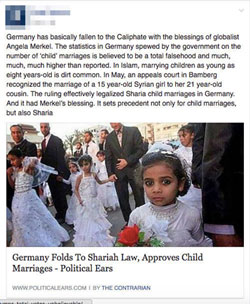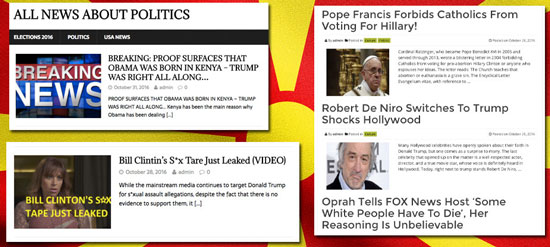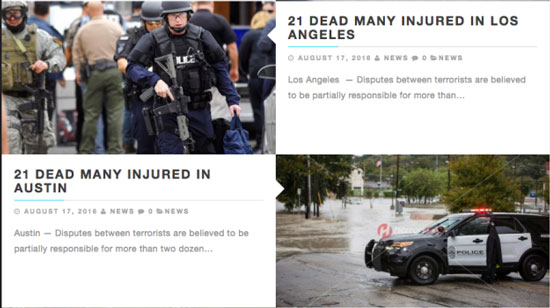What is communicated are commands and… those who give them also say what they mean.
Guy Debord, Comments on the Society of the Spectacle, 1988
Here, to “speak” you must deny yourself the right to communicate,
R. Curcio & A. Franceschini, Sun drops in the stratified city, 1982
and to “communicate” you must deny yourself the right to speak…
– I believe that social networks are tools of liberation and empowerment… The freedom to communicate openly and honestly is not something we should take for granted. In countries where traditional media are tools of control, these new and truly social channels have the power to radically change our world. In my eyes, social networks are one of the most significant leaps forward globally in recent human history. They provide the means for self-expression and promote mutual understanding. They allow for the rapid formation of networks and highlight common human values above cultural differences. They connect people, their ideas and values, in an unprecedented way. From mobilizing young voters in the US to the roots of the Arab Spring in the Middle East, Twitter, YouTube, Facebook and other networks played not just an important role, but the role of the orchestrator…
– There is a huge accountability gap between what technology companies do and what the public is allowed to know. This is not about revealing corporate “secrets,” but about the ability to control the influence exerted by such companies, where overly powerful men, and a few women, hold great power in their hands without any transparency, beyond quarterly profit reports, which are anyway excessively cryptic… What the fake news crisis on Facebook revealed is that we are sailing in uncharted waters. Never before has a private company had such direct power over the way we act, feel, think, meet, buy, resist, anything. And it is impossible, if you want to live in the modern world, to avoid Facebook or Google…
– Facebook played a significant role in the [American] 2016 elections – but not for the reasons it would have liked. In the days following the elections, it came under heavy fire because it had built a mechanism for amplifying and confirming biases and allowed many sensationalist forgers and fake news creators to flourish… And although the company probably never intended to create a system that encourages people to only hear what they want – regardless of whether it’s true or false – Facebook didn’t reach this point by accident. It has made systematic efforts over the past four years to become a news source; to transform itself into the “perfect personalized newspaper” for its 1.8 billion active users…
– It’s time to get rid of Facebook’s news feed, because quite simply, it’s not news… Facebook’s algorithms are perfect at keeping people glued to the screen, but they are completely failed at distinguishing real from fake news. And yet, one of Facebook’s most important functions is called “news feed”. Given the company’s almost laughably tragic inability to determine what constitutes news, this function clearly has a misleading name that deceives. Finally, Facebook, get your act together or remove the feature!
From “tool of liberation”, “mechanism of manipulation”? It seems like things have been turned upside down! It seems like an eternity has intervened since the time when the “global village” was amazedly observing the allegedly radical capabilities of social media (of networks of generalized digital mediation in communication, more accurately) in the distant Middle East, until the moment when the same “village” became frightened witness to the dark side of the internet giants. Yet the initial excerpt is only two years away from what followed. The first is from a 2014 article by Pierre Omidyar, founder of eBay and internet pioneer, on the role of social media in the Arab Spring of ’10-’12. The next three are a selection from recent articles about the flood of fake news that has suffocated Facebook and, according to certain profound analyses, even influenced the outcome of the American elections. And yet, no “coup” intervened that made social networks heralds of satanic corrupters, nor any cataclysmic mutation that canceled their “revolutionary” character. If anything did intervene, it was the depth of intellectual decline in first-world societies, especially those of affluent middle classes – progressive in their worldview, left-leaning in their origins, and liberal in their practices – who flatter themselves with the idea that they skillfully handle the social dimensions of new technologies, but otherwise suffer from unbearable blindness regarding the real conflicts shaping the course of the world. Their own noisy reactions, like kings of an internet empire who were overthrown due to some uprising of the “technologically primitive” masses, are what obscure the issue and mislead from the essential stakes. If this decline were the only significant symptom, the “fake news crisis” would be a matter of lesser importance, but behind the noise lie some notable processes.
the case of the Arab uprisings
Just six years ago – a short time from a historical perspective, but enormous in terms of the scale of cyberspace – the technologically advanced world convinced itself that it had witnessed live the most extensive and massive realization of the archetypal internet myth. The uprisings in North Africa and the Middle East were dubbed the “Twitter revolution” and it was supposedly proven in the most categorical way that electronic networks and digital mediation constitute the “royal road” to democratization. Of course, trying to explain why it is gross nonsense to credit social media with the Arab Spring is analogous to attempting to explain why the telegraph is not responsible for the October Revolution or the fax for the fall of the Eastern Bloc. Because they are tools, which however cutting-edge they may be at the forefront of technology, they remain tools, merely technical means, and cannot cause revolutions out of nothing or uprisings based on spontaneity. And under no circumstances can they replace the hard political work and the painful long-term efforts – usually invisible to the eyes of power and external observers – aimed at transforming deep social processes, the results of which accumulate and transform for years, into immediate, live action in the streets.
Although social media may not have played the role of catalyst or trigger for the uprisings, they did have a decisive role in one area. They exclusively mediated the relationship between Western observers and the events, becoming the distorting lens through which the former understood, interpreted, and ultimately distorted the Arab Spring. Thus, the stereotypical interpretation that prevailed in the civilized first world was the simplistic “tweets were sent – dictators were overthrown, therefore internet = democracy” full stop; something like flash mobs, but on a more revolutionary scale. It was an ideological interpretation that was not lacking in deceit. Firstly, it ignored the real reasons that drove people to struggle and placed all the emphasis on the technical means they chose to organize themselves. Secondly, the emphasis on media at the expense of the human factor concealed an attempt to alienate the uprising. Since the uprising owed so much to “our own” technological achievements, to the social media “we created,” then a large part of its success “belongs to us.” Finally, it was an interpretation crafted to alleviate the feelings of guilt of the first-worlders regarding their own sterile dependence on these technological media; since social media played such a revolutionary role there, the reasoning goes, it’s not so tragic to waste your life posting pointless comments on some Facebook wall…
The “social media revolution” ultimately said absolutely nothing about the uprisings in the Middle East, but it did say a lot about the existential conditions of first-world citizens in Western societies. That widespread access to information and the abundance of digital technologies that accompany it have taken on the role of a general mediator between individuals and reality. And that this mediation has begun to produce a kind of, in some respects unprecedented, digitally shaped intellectual exhaustion. It is precisely this exhaustion that triumphantly emerged in the wake of the “fake news crisis.”
the digital architecture of propaganda



In the latest American elections of November 2016, the spectacle of cyberspace as a critical factor in developments was repeated once more after the Arab uprisings, but completely reversed. Social media, which had then been triumphantly declared “carriers of liberation,” were now accused of deceiving the public and forging the truth. The following article headlines from related journalism are indicative: “how the election bomb exploded in Facebook’s hands,” “here’s how Facebook pushes you to the extremes,” “the crisis with fake news on Facebook deepens,” “most Americans who read fake news believe it,” “the polluted lake of Google and Facebook,” “as lies take over Facebook, many interpret satire as reality,” “fake news: a sinister trend evolving into a global problem”…
A first reasonable and historically justified answer is that the noise is excessive, since digital networks simply repeat the “genetic” characteristic of traditional media, namely to lie incessantly, especially on critical issues such as an electoral process in the USA. This argument holds true, but it fails to capture the full extent, because here we are not simply dealing with yet another confirmation of the role of the media. It is not only the unusual extent and intensity of the spread of fake news that can hardly be detected to a similar degree in pre-internet media. The originality here is twofold. First, in cyberspace, falsehood coexists with its own refutation within the same media and circulates simultaneously through the same channels. The “truth” is not buried, nor is it left to third parties to unearth it; it is there, just as visible as the lies, just as easily detectable via any search engine and a few clicks, hosted on the same network that promotes falsehood. Here we are dealing with an upgraded version of the Situationists’ critique, who had timely warned that within the truly inverted world, the real is but a moment of the fake. Now the real enjoys equal position and exposure with the lie, yet it is still realized beneath the digital sun of cyberspace. Secondly, disinformation campaigns are no longer the business of “specialists” (journalists, press groups, state services, etc.) but an extremely socialized activity. Thanks to upgraded technical capabilities, it is now easier than ever, even for the most amateur insider, to slice up whatever truth there is and serve lies in its place that better serve one’s desires, interests, and prejudices (thus fulfilling the ancient cyber oracle that “on the internet, everyone can become a producer and publisher of their own content”).
These two factors, in turn, reveal the dark contemporary reality. That a significant portion of consumers of digital content are indifferent to the distinction between reality and forgery, and are satisfied to read as “true” whatever confirms their view of the world; whatever fits their prejudices and obsessions. Based on this conclusion, we can understand that we are not dealing with any kind of “fake news” crisis, because simply put, there are no dupes, but believers of various counterfeit versions of reality. One need only look at the themes and headlines of fake journalism to understand the obvious: that it is actually an extensive and mass far-right and racist propaganda, suitable for manipulating and sharpening the fascist complexes of the petty-bourgeois psyche; and against such delusional far-right discourse, the least one can oppose is to “expose it as false.” And allow us here to note something in advance that we consider of crucial importance. Such a condition as the one we highlighted above does not generally and vaguely pertain to the “dirty” role that the media play, but specifically to the role they are called upon to play during a war; whether it is official or covert, whether it is class-based or interstate.
But let us return to the pedestrian informed reality, in order to examine how social media, basically facebook with its 1.6 billion users, evolved into black propaganda machines. The starting point can be placed four years ago, when during the then election period in the US, facebook suffered an unexpected business defeat from a then emerging, but much smaller network, twitter. Thanks to its immediacy, ease of publishing and telegraphic formulations of its posts, users turned en masse to twitter for information, highlighting the “winner” in the confrontation with its big competitor1. Facebook, rightly judging that it was losing the “information” battle, did not delay in responding by upgrading its journalistic character and the already existing “news feed” service at the expense of its until then customary function (the “personal announcements board” of users). In this context, just eight days after the elections, on November 14, 2012, it launched the “share” button in the mobile device version, in an attempt to mimic its competitor’s “retweet” function (share, like retweet, is practically a republication function with sharing to the user’s digital “friends”). This move initially seemed insignificant, but it laid the foundations for a change in user behavior on facebook, encouraging them to share content among themselves, mainly from the sphere of current affairs, faster and faster, with less and less thought, which in turn led to an explosion of sharing throughout the facebook network. However, while in the desktop version, the share function includes the ability to make a small comment on articles, on mobile devices, because typing is a hassle, this ability was removed. Ultimately, the result was a kind of mania that seized facebook users as they frantically shared one link after another. In August ’13, the next significant step was taken with the addition of the “trending” service with the purpose of presenting on users’ pages the content that is occupying the most members within facebook’s “community” at any given moment.
This trio of services—news feed, share, and trending2—may superficially appear grounded in the field of current events and reminiscent of standard journalistic practices; however, in practice, combined with users’ online behavior, it created the digital environment in which all kinds of fraudsters, deceivers, and propagandists of the most paranoid, conspiratorial, and racist views flourished. Indeed, this occurred; from the moment users gained the ability to freely share any sensational headline that caught their eye—and Facebook endorsed this practice by promoting such “news” in the news feed—the platform became flooded with “articles” from fringe far-right sites. Subsequently, opportunists identified this functionality of Facebook as a golden business opportunity. A characteristic example (and not the only one, nor even among a few) is National Report, a site described as satirical, which exclusively publishes false news stories designed to satisfy and inflame the instincts of far-right audiences. “We definitely wanted to get into this story with the prejudices presented as news. What we assumed people wanted to hear, that’s exactly what we sold them,” the founder of National Report had stated in an interview. Thanks to Facebook, the site skyrocketed and received over 30 million visits within 2014, along with corresponding profits from advertising. The fact that it was “selling smoke” was irrelevant; it was heavily promoted through Facebook, became a news source for the conservative Fox News, and after publishing a fake story claiming that food stamps were being exchanged for marijuana at pharmacies, it even prompted the Colorado legislature to vote on a bill banning such a “practice.”


The examples are entirely indicative. For a country like this one—where online thrive Soros, “first time left”, anti-Greek conspiracies, racist hysterias, and archaic sobriety—a dissertation would be needed to study the impact of digital technologies on rampant philhellenism.
In November 2014, Facebook’s role as a “news” channel had become so entrenched that Zuckerberg (founder, major shareholder, president and CEO of the company) announced that “our goal is to build the perfect personalized newspaper for every person in the world.” An undeniably grandiose goal, given that toxic lies had already become the main product distributed by Facebook. In order to create the “perfect personalized newspaper,” the news feed service had to become the glue that would keep users stuck to and satisfied with the platform. To achieve this, Facebook began systematically monitoring and recording the online behavior of its users, in order to determine what pleases its consumers and keeps them online longer, so that this data could appropriately feed the news stream on each user’s personal page. Imagine a newspaper that gradually and imperceptibly changes day by day, depending on what you read the previous day and liked, so that in the end it becomes a leaflet that exclusively hosts “news” that pleases you. It is obvious that under such conditions, the result does not resemble a “newspaper,” but rather a mechanism for recycling and confirming stereotypes and prejudices—whatever pleases the customer!
Two parallel modifications in the organization of Facebook in 2015 further strengthened this mechanism. On one hand, the company launched the “instant” service, which allows publishers (of all kinds, not only “recognized” news organizations) to post content directly on Facebook and share advertising profits. On the other hand, the news feed algorithm was changed so that news originating from traditional media conglomerates would no longer receive particular weight, while “news” shared by those within the user’s “friends and family” circle would have greater prominence. Practically, this meant that from that point onward, whether it was a Reuters report (for example) about bombings in Aleppo, or the “shocking revelation! the truth they hide from us” by Mr. So-and-so about the “risk of Islamization,” everything was treated equally, with priority given to whatever garnered the most shares. But which one would that be?
By mid-2015, the fake news and black propaganda industry was in full swing. Nearly half of Americans (44%, according to one survey, and we suspect the percentage is similar in Europe) had by then turned exclusively to Facebook for their “news.” Since last August, fake “news” had overtaken legitimate news in terms of (measurable) reach within Facebook. The sharing of “original content,” meaning users posting their own texts, photos, videos, etc., had dropped sharply, while the simple click of the “share” button had become Facebook’s fastest-growing service. By the end of the year, original content posting had fallen by 21%, and the void had been filled with gossip, scandals, fabricated truths, conspiracy theories, and hate speech, all disguised as “journalism.” Facebook’s operational algorithm had transformed the network of 1.6 billion active users into a privileged channel for amplifying and promoting petty bourgeois paranoia and misanthropy.
The mechanism was completed in May 2016, when the way “trending” operated changed radically. Until then, the curation of the trending topics feed “that concern the community” and their selection was in the hands of people, company employees, who “filtered out” sensationalist false and misleading news. However, when Facebook faced accusations from the right of “bias” and that curators systematically “buried” conservative views, in order to maintain a neutral profile, the company removed the human personnel of trending and replaced them with an algorithm. Zuckerberg himself met on May 18 with a group of conservative leaders to give them assurances of good cooperation and trust. According to his own statement, he met with them in order to “discuss how they can ensure that Facebook will continue to be a platform for all ideas, across the political spectrum… The success of our community depends on everyone’s comfort in sharing whatever they want… The truth is that conservatives and Republicans have always been an important part of Facebook. Donald Trump has many more fans on Facebook than any other candidate. And the Fox News network has the strongest page on Facebook of any news organization. Yet I know that many conservatives don’t believe we display content without political bias. I wanted to personally hear their concerns and openly discuss how we can build trust between us.” Two days after this meeting and the algorithm taking over the curation of trending, the first false news item found its way onto the list, thus completing the already corrupted news feed service with lies. Since then, posting fake news on the “top topics” list has become routine, and what followed simply confirms the commitment of Facebook and the right to “building a relationship of trust.”

the profit margin of the lie
The online misinformation industry wouldn’t have reached such proportions without a crucial factor: the ability to make money from the stories. This is where the other tech giant, Google, enters the game with its AdSense service. This service allows anyone who owns a website to profit from it, by granting Google the ability to place advertisements on their websites and giving them a share of the advertising revenue, depending on the site’s traffic; the more visits, the more income. The whole process is extremely easy and the site owner practically doesn’t need to do anything more than sign up for the service, have a bank account, and from there on Google takes care of everything else. For large corporate sites, potential earnings from AdSense might be modest, but for small-scale seekers of easy profit and fraudsters willing to sell “seaweed for satin ribbons,” the returns can be enormous. Although AdSense has existed since 2003, it has recently skyrocketed thanks to the massive increase in sharing on Facebook, which allows all kinds of digital content to spread like wildfire through the dry grass of cyberspace. The business model is extremely simple. Google offers the incentive of profit, while Facebook provides a huge pool of consumers already trained to share and spread anything loud and impressive among themselves. What was missing was the suitable “product” that could fully exploit the capabilities offered by these two internet giants. This “product” was nothing other than blatant lies, packaged in far-right propaganda wrapping. Since the public consumed this, it was inevitable that those who would supply it abundantly and freely would emerge; until drowning… The methodology is also a model of simplicity. Sites packed with all kinds of fabricated news; recycled material, usually stolen from other similar “sources”; titles as provocative as possible to act as bait; dozens of fake profiles on Facebook, as lures, constantly recycling the lies, and that’s it: users gather like flies around dung and AdSense profits flow into the account. We’ve already mentioned the example of National Report in the US, but an even better example, worthy indeed of the “global digital village,” is found in Veles, Macedonia.
Veles is a small town of 50,000, with nothing particularly notable to attract global attention, yet it hosted one of the best online propaganda machines in favor of Trump during the American elections. Since the beginning of 2016, as if an internet “gold rush fever” had seized the town’s residents, they set up dozens of websites (the British Guardian counted 150) with political content. These sites had American-sounding names, such as WorldPoliticus.com, TrumpVision365.com, USConservativeToday.com, DonaldTrumpNews.co, and almost all published extreme pro-Trump election articles, targeting right-wing, conservative voters in the US. Of course, what concerned the young people behind these sites least was the outcome of the American elections, since their motives were clearly financial. According to their own statements (in interviews they gave anonymously to American and British media), their goal was to make money through AdSense, and they correctly realized that the best way to increase traffic to their sites was for the content to spread via Facebook—and the best way to gain shares on Facebook was to publish the most sensational and extreme lies supporting the far-right campaign in the US. The “articles” were usually directly borrowed from American fringe and far-right sites, the titles were tweaked to attract maximum attention, and the results were impressive. The Balkans-made forgeries sometimes surpassed in online resonance even articles from newspapers such as the New York Times, while the profits were proportionate. At the height of the pre-election campaign, the most successful of these sites were earning up to 5,000 euros per month. Lies sell, and they sell well…

the origin of digital fascism
After what we have presented, it is reasonable to ask the double question, on the one hand whether the case of black propaganda via the internet is a recent matter and on the other hand whether Facebook and social media in general are ultimately the only ones responsible for the explosion in the production of lies. The answer to both is certainly no. If something changed recently, it is that tendencies that existed for years in cyberspace manifested openly and without any attempt at “disguise.” Online racism and misogyny, hatred for immigrants and Muslims, Christian fundamentalism, and hardcore nationalism emerged to such an extent and intensity, without any pretense or complexes, brutally and coldly. Facebook obviously contributed by providing the necessary technical tools and acting as an amplifier and general distributor of far-right propaganda; but Facebook did not create all those little white, petty bourgeois fascists who so easily consume and sometimes even perpetrate such content online. If we go back a few years, we will find them already acting online like human pigs on forums such as 4chan and Reddit; there, under the guise of “banter” or “jokes,” or “conspiracies plotted by them,” or whatever other “crazy theory,” large communities began forming that shared the same views about “the role of women,” “the place of immigrants,” and “how barbaric” the Others are. Through such forums and communities, it has long been easy for a user to start with a joke about Muslims, for example, in some unsuspecting discussion, and after a few clicks end up on the most hardcore racist websites. The same applies to the older phenomenon of the internet fake news industry on sites related to health and sports, since these two sectors involve a lot of money. How many dangerous supplements have been ordered and circulated due to wellness trends and for the sake of well-developed muscles, and how many illegal bets have been placed online in pursuit of the “big score,” is something that escapes Facebook’s news feed and has its own dynamics. Supposedly satirical websites exclusively featuring fabricated news were already a trend on the internet long before social media promoted them even further. The fake “exclusives” they published, humorously at first, quickly gained authenticity after several republications that gradually removed the “fake” label. Gossip, lack of discrimination, exaggeration, scandal-mongering, and insatiable hunger for scandalous details of a celebrity’s life—all these are legacies directly inherited by the internet from the glorious era of television and the press. “Movements” with the most phobic or paranoid content, such as those concerning chemtrails, anti-vaccination, or the existence of aliens among us, flourished even through chain emails and underground blogs, without needing hundreds of thousands of shares from Facebook. Finally, the now sixteen-year “war on terror,” with its bloody consequences (blind strikes, killings of innocents, bloodthirsty terrorists, shadowy organizations…), and the iron armor of secrets and lies surrounding it, has intensely “trained” the global public not only to consume falsehoods unquestioningly but also to accept them as a valid, “alternative” version of reality; “it is what it is, since that’s what the speaking heads of states say”…
When social media became the great mediator in communication, surpassing traditional print media and television, a significant part of the audience was already addicted to pseudology and deception. When social media decided to become not only social but also political networks, their petty bourgeois consumers had already made their choices: xenophobia, racism, and “crush the intruders.” When Facebook decided to distribute “journalistic” content to its community members, most of them already had an intolerance for anything that did not fit their stereotypes and could only accept propaganda. When the heralds of the far-right launched their campaign, they already found ready-made audiences on Facebook; all they needed to do was activate the network’s endless possibilities.
Therefore, no, Facebook did not create the mass of delusional fascists, it found them ready. But as a pioneering company that it is, it worked effectively and profitably with the material it had available. And it succeeded famously…

The figure accompanying the post is Pepe the Frog, representative of the evolution and spread of racist culture on the internet. The frog was designed in 2005 as a kind-hearted hero in children’s stories. For ten years, it wandered through the weirdest and most marginal corners of the internet, transformed, and became the mascot of many “communities” on 4chan and reddit. When the American far-right emerged through such forums, it brought Pepe along, who had by then been adopted by racist trolls and starred in grotesque depictions of “white supremacy” and antisemitism.
the little cousin of the big brother
The fact that the “fake news crisis” reflects real social movements and that Facebook functioned as a multiplier of far-right messages does not mean that the possibility of幕后 orchestration and staging is ruled out; that is, that things were orchestrated and pushed in the appropriate direction, in order to culminate in a xenophobic spectacle. We are talking about the possibility that the whole story was also a matter of manipulation. Either by Facebook’s company, or by state services, or by a combination of both. There are elements that suggest something like this – and somewhat ironically, they are freely available online, provided they are critically combined. We know, for example, from the files disclosed to the public by Edward Snowden, that Facebook has been participating since 2009 in the secret PRISM program of the American NSA (National Security Agency). PRISM has access to and processes the personal data of users of at least nine internet companies (Google, Microsoft, Yahoo, YouTube, Skype, Apple…), and this is only the side that became known. The fact is that there is an open and steady channel of communication and cooperation between Facebook and secret services.
Moreover, two years ago it was revealed—officially, at a scientific conference—that at some point in 2012, Facebook organized and carried out a large-scale experiment, turning 689,000 users into unwitting test subjects. The purpose of the experiment was to study how the news feed affects users’ moods and behavior. The users were divided into two groups, each receiving manipulated results in their news feeds in order to observe their reactions. The news feed of one group was filtered so that users received exclusively positive news, while the other group received exclusively negative news. The result was that members of the first group began posting increasingly positive content from the outset, while the opposite occurred with the second group. The conclusion was that they could make users feel more positive or negative by “infecting” them with the corresponding emotions of their friends: “We showed, through a large-scale (N = 689,003) Facebook experiment, that emotional states can be transmitted to others through emotional contagion, leading people to experience the same emotions unknowingly… Moods expressed by friends through online social networks influence our own moods, making this conclusion, according to what we know, the first experimental evidence of the possibility of emotional contagion on a massive scale through social networks.” Let us rephrase it: Facebook experimented on 689 thousand users without their knowledge, deliberately feeding their news feeds selected news stories to see if it could emotionally manipulate them. One more time, to drive the point home: in 2012, Facebook conducted an experiment in manipulating users through news stories and concluded that it can influence their behavior in specific directions. And although the conduct of this experiment has been known for at least two years, and was even the subject of a parliamentary investigation in Britain where the possibility of prosecuting Facebook was examined, it was not considered to be connected to the current “fake news crisis.”
However, the story has other levels as well. The experiment was conducted on behalf of Facebook by Professor Jeff Hancock and his team from Cornell University in New York. Both the professor and the university actively participate in the Minerva Research Initiative of the U.S. Department of Defense. The program started in 2008, amid the acute crisis, aiming to study the dynamics of social unrest worldwide. “The Minerva initiative began to help the Department better collaborate with universities in order to improve understanding of the social, cultural, behavioral, and political forces that are changing regions of the world of strategic importance to the U.S.”, according to an announcement from the Department itself. Cornell is one of the universities that actively participates in the initiative, having received funding until 2017 from the Air Force research office for a study on “building an empirical model of the dynamics of mobilization and spread of social movements.” This research aims to study “the critical mass threshold in the spread of a movement,” by examining digital traces in cases such as “the Egyptian revolution of 2011, the Russian elections of 2011, the oil crisis in Nigeria in 2012, and the protests in Gezi Park, Turkey in 2013.”
Let’s summarize it, for the third time, to have a more complete picture: in 2012, Facebook conducted a secret manipulation experiment on 689,003 users, managing to direct their reactions by feeding them specific news and updates, under the scientific guidance of a professor and a university that collaborate closely with the American Department of Defense, researching based on their digital traces the dynamics and contagiousness of social movements.
Finally, do the bears hibernate in the cyber-forest?3

the digital sound of drums
A mistake that is increasingly repeated these days by those who decide to confront the tidal wave of lies is the belief that it suffices to publicly expose the forgery and reveal the ugliness, lie upon lie, in order to restore (some) truth. However, despite their honesty and good intentions, such efforts inevitably hit the wall of reality without success. Because, we repeat, there are no dupes. Those who browse the digital highways collecting horrifying “news” about migrants or sensational “revelations” about conspiracies against them are not driven by gullibility and naivety, but by self-interest. It is not enough to “reveal” (some) truth to them in order to make them admit they are wrong, because quite simply they have chosen a specific camp and opt to filter reality through the dogmas of their faction. Such a condition is not unfamiliar; it is called war. And in war, the first casualty is truth.4
In The Society of the Spectacle, Debord writes that “the spectacle is the self-portrait of power in the era of the total management of the conditions of existence… The spectacle is the nightmare of the modern chained society, which ultimately expresses nothing but the desire to sleep. The spectacle is the guardian of this sleep.” If he were writing today, in an era where the spectacle has donned the informed ethereality of cyberspace, he would have to add that, apart from being the guardian of sleep, when conditions demand it, the spectacle also performs the equally important roles of recruitment, incitement, and amplification of the most shameful campaigns. Today’s conditions converge due to the crisis and the open warfare fronts (both internal and external), so the spread of black propaganda through social media should come as no surprise; nor should we be amazed if lies succeed the vaccines.
Harry Tuttle

The similarities with the case of the sites in Veles are obvious, and beyond their fraudulent nature, two points should concern us. First, although the sites may have been based in Veles or Georgia, this does not necessarily mean they were set up by locals or that the scam was orchestrated on-site. Second, the fact that there is fraud involved does not necessarily mean that all intentions were financial; some may have been in it for the money, while others may have sought to maintain an atmosphere of panic and confusion.
One does not negate the other…

- Facebook (like Google and other online platforms that provide free services) makes money mainly from advertisements. This means that it is “burning” for more and more users/subscribers, who remain glued to their screens for longer and longer periods. The loss of users translates directly into a loss of revenue. The “hunt for customers,” which permeates and dominates every announcement, plan, and innovation of the company (let’s not forget: “social media” are the electronic storefronts of massive corporations; their “social” nature is exhausted in the competition among themselves) means, in turn, that users must not be upset at any cost; they must constantly be kept in a state of “digital positive disposition” so that their stay on the network is prolonged. ↩︎
- For those unfamiliar with Facebook’s functionality, the news feed, share, and trending features are not services displayed on a “central page” of Facebook, but rather on all users’ personal pages. ↩︎
- In the case of the alleged intervention by state services that allegedly corrupted the internet with fake news, recent additions (while this text had already been completed) include the American accusations against Moscow for interfering in the electoral process through cyber-attacks and propaganda. These accusations, which had been under investigation for months prior—even while the pre-election period was still ongoing—were ultimately codified into a joint public report by three American security services (CIA, FBI, NSA).
The report doesn’t say anything clear or specific, beyond exaggerating the usual practices of intelligence services in order to portray the Kremlin as a kind of “boogeyman” of the internet. However, beyond the generalities and naive arguments, the key point is that merely publicizing and sensationalizing the alleged dirty role of Russia in the American elections invalidates the accusations themselves. Because admitting that “democratic processes” are corrupted and an open vineyard constitutes an acknowledgment of a fundamental defeat and failure, and if such a thing had indeed occurred, it is certain that the first ones to cover it up (and throw the responsible parties into some ditch) would be the intelligence services themselves. Therefore, we must look elsewhere for the real substance, not in the easy demonization of some “sneaky Russian hackers.” First, the report may have to do with internal processes and rivalries within the American state. Second, since there is even a relevant reference, it could constitute a kind of warning—at amafia-like level—toward allies and non-friends and allies, that their internal political processes can easily become “grist for the mill,” and if something like that happens, “it will be the Russians’ fault.” Third, it constitutes a public admission that cyberspace is a testing and application ground for manipulation practices, and that these practices are the subject of scientifically organized attention by state services. ↩︎ - This historical phrase is a characteristic case of the ease of distortions and constructions that prevail on the internet. A quick search on the internet will tell you that the phrase belongs either to Aeschylus from some (undefined) work of his, or to some American congressman from the parliamentary discussions on the US entry into the First World War. It takes more extensive and careful searching to ascertain that both versions are false and that the phrase is actually of British origin from 1916-17. But it is incredible how easily countless “inspired exhortations,” “predictions,” and “analyses” by every historical figure circulate and reproduce on the internet, which are in reality fabricated forgeries. Equally incredible are the historical forgeries and paranoid interpretations themselves, an internet domain in which Greek conspiracy theorists excel. Even more impressive is how the countless reproductions on the internet make any nonsense “credible,” convincing even people who otherwise would have rushed to libraries and archives to cross-check and verify anything. But this intellectual laziness that has turned the internet into a medium of general validation is a subject of explanations that exceed this text. ↩︎
